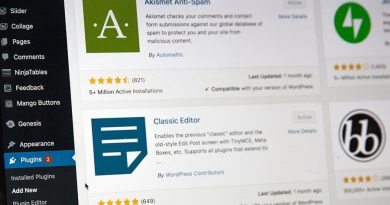Image Optimization for Web: Enhancing Performance and SEO Rankings
In today’s visually driven online landscape, image optimization is not just a matter of aesthetics but a crucial aspect of website performance and SEO. Optimized images can improve page load times, enhance user experience, and positively impact your search engine rankings. As an SEO expert with a wealth of experience, I recognize the significance of image optimization in maximizing the potential of a website. In this article, we will dive deep into the world of image optimization for the web. From choosing the right image formats and compressing images for faster loading to utilizing alt text and optimizing image dimensions, we will explore a range of practical techniques to help you unlock the power of optimized images for improved performance and SEO success.
The Power of Image Optimization: Enhancing Website Performance and User Experience
Image optimization holds the key to unlocking the full potential of your website. Optimized images can significantly improve website performance, resulting in faster page load times and a seamless user experience. By reducing image file sizes without compromising quality, you can create a visually appealing website that loads swiftly across devices and connection speeds. Improved performance not only keeps visitors engaged but also reduces bounce rates, increases user retention, and signals search engines that your website provides a positive user experience. As a result, you can expect higher search engine rankings and enhanced visibility in organic search results.
Understanding the Importance of Image Optimization for SEO Rankings
In the ever-competitive world of search engine optimization (SEO), image optimization is a critical aspect that should not be overlooked. Search engines consider various factors when ranking web pages, and images play a significant role in this process. Optimized images contribute to faster page load times, improved user experience, and lower bounce rates—all of which are important ranking factors. Additionally, search engines rely on alt text, file names, and surrounding content to understand the context and relevance of images. By optimizing these elements, you can provide search engines with valuable information, improve your website’s SEO signals, and increase your chances of ranking higher in search engine results.
Compressing Images for Faster Loading Times and Improved Page Speed
One of the primary techniques in image optimization is compressing images to reduce file sizes without sacrificing quality. Large image files can significantly impact page load times, leading to a poor user experience and lower search engine rankings. By employing image compression techniques, such as using efficient compression algorithms or utilizing online tools, you can strike a balance between image quality and file size. Compressed images load faster, resulting in improved page speed and a more enjoyable user experience. Remember, optimizing images for the web is a delicate balance between quality and performance, and finding the sweet spot is essential for successful image optimization.
We use this online tool for image compression https://compressor.io/
Choosing the Right Image Format: JPEG, PNG, or GIF?
When it comes to image optimization, choosing the appropriate file format is crucial. Three commonly used image formats are JPEG, PNG, and GIF, each with its unique characteristics and best use cases. JPEG is ideal for photographs or images with complex color variations, providing good image quality with efficient compression. PNG is suitable for graphics, logos, or images with transparency, offering lossless compression and excellent quality. GIF is commonly used for animated images or simple graphics. By understanding the strengths and limitations of each format, you can select the right format for your images, ensuring optimal quality and efficient file sizes.
Utilizing Alt Text: Boosting Accessibility and SEO Value
Alt text, or alternative text, is a crucial element in image optimization that provides textual descriptions of images. Apart from enhancing accessibility for visually impaired users who rely on screen readers, alt text also plays a significant role in SEO. Search engines use alt text to understand the content and context of images since they cannot interpret images themselves. By incorporating descriptive and relevant alt text for each image, you can improve your website’s accessibility, provide a better user experience, and signal search engines about the content and keywords associated with your images, leading to improved SEO rankings.
Image File Naming: Optimizing for Search Engines and User Understanding
When optimizing images for the web, it’s important to consider not just the visual aspect but also the file naming. Image file names provide additional context and relevancy signals to search engines and website visitors. Instead of generic names like “IMG_001.jpg,” use descriptive file names that reflect the content of the image and include relevant keywords. For example, “beach-sunset-ocean.jpg” provides more information about the image’s content and improves the chances of search engines associating it with relevant search queries. By optimizing image file names, you enhance SEO signals and make it easier for users and search engines to understand your website’s visual content.
Responsive Images: Ensuring Compatibility Across Different Devices
In the era of multiple devices and varying screen sizes, responsive design is crucial for providing an optimal user experience. Responsive images adapt to different screen sizes and resolutions, ensuring that your visuals look great on any device. By utilizing responsive image techniques, such as using CSS media queries or HTML’s srcset attribute, you can serve appropriately sized images to different devices. This not only improves the visual experience for users but also reduces unnecessary bandwidth usage by delivering smaller file sizes to smaller screens. Search engines appreciate responsive design, as it ensures a consistent and user-friendly experience across devices, potentially boosting your SEO rankings.
Optimizing Image Dimensions: Finding the Right Balance for Quality and Load Times

The dimensions of your images play a crucial role in their optimization. By resizing images to their display dimensions on your website, you eliminate the need for browsers to scale them, reducing the strain on server resources and improving page load times. While it’s essential to maintain image quality, it’s equally important to find the right balance between dimensions and file size. Avoid uploading oversized images and relying on CSS to scale them down, as this results in slower page load times. Instead, optimize your images to the appropriate dimensions, ensuring they are visually appealing while being optimized for web performance.
Image Captions and Descriptions: Adding Context and Enhancing SEO
Image captions and descriptions are valuable opportunities to provide additional context and engage users. Captions can help clarify the meaning or purpose of an image, while descriptions offer more detailed information. From an SEO perspective, captions and descriptions offer opportunities to incorporate relevant keywords naturally. Search engines use this textual information to gain a deeper understanding of your images and their context within the surrounding content. By crafting compelling captions and descriptions that are relevant, descriptive, and optimized, you enhance both the user experience and SEO signals associated with your images.
Lazy Loading: On-Demand Image Loading for Improved Performance

Lazy loading is a technique that defers the loading of images until they are about to be viewed by the user. Instead of loading all images at once, lazy loading prioritizes the images within the viewport, significantly improving page load times. As users scroll down a page, images are loaded dynamically, reducing initial loading times and saving bandwidth. Lazy loading is especially beneficial for websites with a large number of images or lengthy content pages. By implementing lazy loading, you can optimize your website’s performance, provide a smoother user experience, and enhance overall page speed.
Image Sitemaps: Ensuring Search Engines Discover and Index Your Images
To ensure search engines discover and index your website’s images effectively, it’s crucial to include them in your XML sitemap. An image sitemap is a specialized sitemap that provides search engines with essential information about your images, such as their location, captions, titles, and license information. By submitting an image sitemap to search engines through Google Search Console or other relevant platforms, you increase the chances of your images being properly indexed and displayed in search results. This optimization technique helps search engines understand your visual content, further enhancing your website’s SEO efforts.
Using CDN for Image Delivery: Accelerating Load Times Globally
Content Delivery Networks (CDNs) are widely used to distribute website content efficiently across multiple servers located in different geographical regions. When it comes to image optimization, utilizing a CDN can significantly improve load times by delivering images from the server closest to the user’s location. This reduces latency and speeds up the content delivery process, resulting in faster page load times and improved user experience. CDNs also offload the server’s bandwidth, allowing it to handle other critical tasks more efficiently. By leveraging a CDN for image delivery, you can optimize performance on a global scale and ensure a smooth user experience for visitors from various regions.
If you are interested in the best CDNs for images you can find them here.
Optimizing Thumbnails and Featured Images for Social Media Sharing
Thumbnail and featured images are crucial elements for social media sharing, as they often serve as previews that entice users to click and engage with your content. To optimize these images for social media platforms, ensure they meet the recommended size requirements for each platform, such as Facebook, Twitter, or LinkedIn. By adhering to the recommended dimensions, you can avoid cropping or distortion issues that may arise when sharing your content. Additionally, consider incorporating relevant branding or text overlays to enhance the visual appeal and convey key messages effectively. By optimizing thumbnails and featured images, you increase the chances of attracting attention and driving traffic from social media platforms to your website.
Read also: How Do I Find My Target Audience on Social Media?
Minimizing Image Redirects: Streamlining User Experience and SEO
Image redirects occur when an image URL points to a different URL, often resulting in additional HTTP requests and slower load times. Minimizing image redirects is crucial for improving user experience and optimizing SEO efforts. Ensure that the image URLs in your HTML code directly point to the location of the image file, avoiding unnecessary redirects. By streamlining the image loading process, you reduce the chances of interruptions and improve the overall performance of your website. Search engines also appreciate efficient image delivery, which can positively impact your SEO rankings.
Removing Excessive Metadata: Reducing File Sizes Without Compromising Quality
Images often contain metadata, such as camera settings, copyright information, or location details. While this information can be valuable, it also adds to the file size of images. To optimize your images effectively, consider removing excessive metadata that is unnecessary for web display. Many image editing tools and optimization plugins allow you to strip metadata from images, reducing file sizes without compromising visual quality. By removing excessive metadata, you achieve smaller file sizes, faster page load times, and improved website performance. It’s important to strike a balance between maintaining the necessary metadata for copyright or attribution purposes while optimizing the images for web display.
Utilizing Image Compression Plugins and Tools for Effortless Optimization
Image compression plugins and optimization tools provide a convenient way to streamline the image optimization process. These plugins and tools automatically compress and optimize images, reducing file sizes without sacrificing visual quality. By integrating such tools into your website’s content management system (CMS) or utilizing standalone optimization tools, you can optimize images effortlessly and consistently. Additionally, some plugins offer features such as bulk optimization, image resizing, and automatic compression upon upload. These tools save time and ensure that all images on your website are optimized for web display, resulting in improved performance and user experience.
Take a look at the best image compression plugins for WordPress here.
Retina Display Optimization: Delivering Crisp Images on High-Resolution Screens

With the proliferation of high-resolution screens, such as Retina displays, delivering crisp and high-quality images has become essential. Retina display optimization involves serving images with double the pixel density, resulting in sharper and more detailed visuals. To achieve this, create and upload images at double the resolution you intend to display on standard screens. Then, utilize CSS or HTML to display the images at the intended resolution on Retina screens. By optimizing images for Retina displays, you provide an enhanced visual experience for users with high-resolution devices, ensuring your website looks stunning across a range of screens.
Capturing Attention with Visuals: Optimizing Images for Click-Through Rates
Optimizing images not only impacts website performance and SEO but also plays a crucial role in capturing user attention and improving click-through rates (CTRs). Engaging visuals can entice users to explore your content further, click on links, and spend more time on your website. To optimize images for CTRs, ensure they are visually appealing, relevant to the content, and properly sized to attract attention without overwhelming the surrounding text. Consider utilizing strategic placement, utilizing focal points, and incorporating design elements that guide the user’s eye toward important areas or calls to action. By optimizing images for CTRs, you can increase user engagement and drive conversions.
A/B Testing Image Variations: Finding the Most Effective Visuals for Conversion
A/B testing, or split testing, is a valuable technique to optimize images and determine which variations perform best in terms of conversion rates. By creating multiple versions of an image and comparing their performance, you can identify the most effective visuals for achieving your conversion goals. Test different aspects such as colors, layouts, calls to action, or focal points to gauge user preferences and behaviors. Through A/B testing, you can refine your image optimization strategies, continually improve user engagement, and maximize your website’s conversion potential.
Monitoring Image Performance: Analyzing Metrics and Fine-Tuning Optimization Strategies
Continuous monitoring of image performance is essential to gauge the effectiveness of your optimization strategies and identify areas for improvement. Analyze metrics such as page load times, bounce rates, and user engagement to evaluate the impact of image optimization on your website’s performance. Utilize web analytics tools to track image-specific metrics, such as image impressions, clicks, or interactions. By monitoring these metrics, you can fine-tune your optimization strategies, experiment with new techniques, and adapt to changing user behaviors and preferences. Continuous analysis and optimization of image performance contribute to ongoing improvements in website performance, user experience, and SEO rankings.
Read also: On-Page SEO: Unlocking Website Success Through Optimization
Conclusion: Image optimization for the web is a multifaceted discipline that combines technical considerations, user experience enhancements, and SEO strategies. By implementing the techniques discussed in this article, including compressing images, choosing the right formats, utilizing alt text, optimizing dimensions, and embracing responsive design, you can enhance website performance, improve page load times, and boost your SEO rankings. Remember to continually monitor and analyze image performance, adapt to evolving trends and technologies, and strive for a balance between image quality and optimal file sizes. By prioritizing image optimization, you can unlock the power of visuals and provide a seamless and engaging user experience that propels your website to new heights of success.



